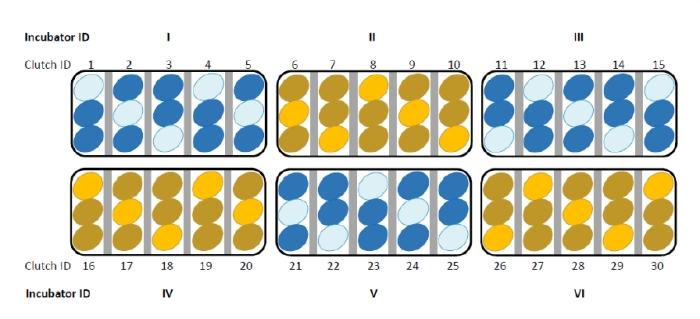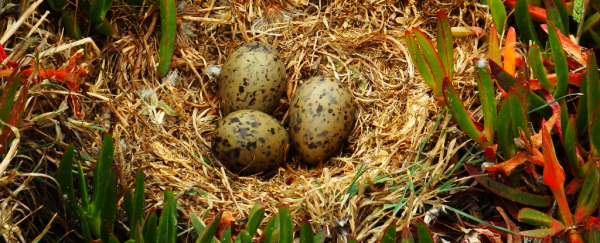Unhatched bird embryos can not only hear the warning calls of adult birds - they can communicate that information to their unhatched brothers and sisters sharing the same nest, remaining safely tucked away in their shells until it is safe to hatch.
It is a finding that reveals how birds can adapt to their environment even before birth, since, unlike placental mammals, their physiology can no longer be influenced by changes in their mother's body after the egg is laid.
In particular, a team of researchers exposed unhatched yellow-legged gull (Larus michahellis) eggs to cues that indicated high predation risk. Not only did the unhatched embryos communicate these cues to unexposed nestmates, they emerged from their eggs exhibiting much more cautious behaviour than the control group.
"These results strongly suggest that gull embryos are able to acquire relevant environmental information from their siblings," the researchers wrote in their paper.
"Together, our results highlight the importance of socially acquired information during the prenatal stage as a non-genetic mechanism promoting developmental plasticity."
The experiment itself is pretty elegant, actually. The team collected wild gull eggs from a breeding colony on Sálvora Island in Spain that experiences fluctuating levels of predation, especially from small carnivores such as minks.
 (Noguera & Velando, Nature Ecology & Evolution, 2019)
(Noguera & Velando, Nature Ecology & Evolution, 2019)
These eggs were divided into clutches of three eggs, and placed in incubators. They were then assigned to one of two groups - the experimental group (yellow in the image above), or the control group (blue).
From each clutch, two of the three eggs were removed four times a day from their incubator - always the same two eggs, depicted in a darker shade in the diagram - handled, and placed in a soundproof box where they were played recordings of adult predator alarm calls.
For the control group eggs, no sound was played inside the soundproof box.
Then they were placed back in the incubator, in physical contact with the 'naive eggs' that had remained behind.
The eggs that had been exposed to alarm calls, the researchers found, tended to vibrate more in the incubator than the eggs that had been placed in the silent box. And this is where it gets interesting.
The experimental clutches, including the naive eggs that had not been exposed to the alarm calls, took longer to hatch than the control clutches. And when they emerged, all three chicks in the experimental clutches showed the same developmental changes.
Compared to the control chicks, the experimental chicks made less noise, and crouched down more - a defensive behaviour usually made in response to adult alarm cries.
And all three chicks in each experimental clutch - including the naive chick - had physiological characteristics not seen in the control clutches. They had higher levels of stress hormones, fewer copies of mitochondrial DNA per cell, and a shorter tarsus, or leg.
This, the researchers said, indicates a trade-off. The birds are better able to respond to danger, but it comes at a "cost of a reduced cellular capacity of energy production and growth."
According to statistical analyses, these physiological differences can't be attributed to incubation length alone. Since the only difference in the treatment of the clutches was the alarm calls, and since the only observed difference in the behaviour of the eggs was the vibration rate, it seems likely that unhatched chicks can communicate danger to their nestmates via vibration.
"Our results clearly show that bird embryos exchange valuable information, probably regarding risk of predation, with their siblings," the researchers wrote in their paper.
Future studies should investigate whether the use of social information by developing embryos can favour adaptive phenotypic plasticity in other contexts, such as adverse environmental or social conditions, and whether or not such programmed responses can vary among embryos belonging to the same clutch."
Isn't nature's adaptability amazing?
The research has been published in Nature Ecology & Evolution.
